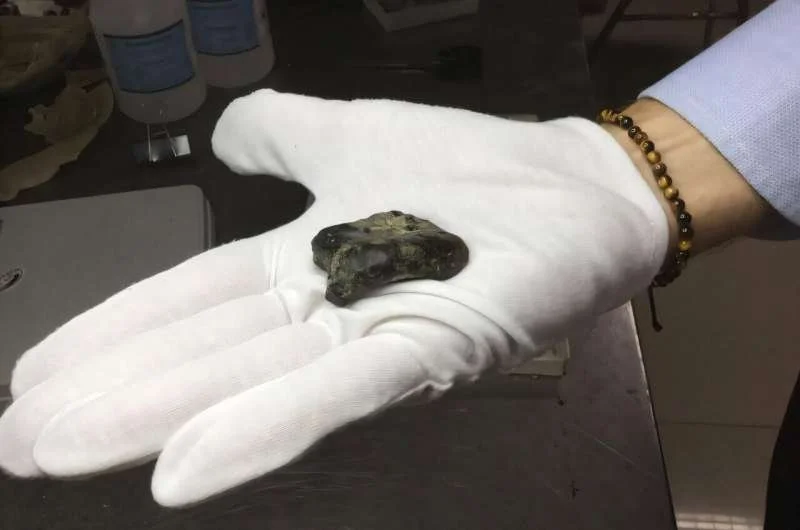A resurgence of paganism may once have brought demonic fears to early-modern peoples, but an ancient Polish community found a way to cope.
Burying bodies with a sharp, curved iron sickle pressed against the throat or hips of a body guaranteed that if the dead rose back up, they wouldn't get very far.
Five such graves have been exhumed from a 17th century Drawsko cemetery, and researchers say the unique burials hint to folk demonology.
Of the graves studied, four bodies were buried with sickles placed with the cutting edge tightly against the throat, according to the paper.
The fifth body had a sickle pressed up against the pelvis.
The researchers, Marek Polcyn and Elżbieta Gajda, have written that such burial practices are often viewed as 'anti-vampiric,' measures, or can indicate the graves of 'vampires,' but they dismiss this term in order to open up the discussion to include a wide scope of demons.
'When placed in burials they were a guarantee that the deceased remained in their graves and therefore could not harm the living, but they may also have served to protect the dead from evil forces,' the researchers wrote in a study published in Antiquity.
'According to folk wisdom, a sickle protected women in labour, children and the dead against evil spirits.
It also had a role in rituals designed to counter black magic and witchcraft.'
Five bodies with sickles were found among 250 burial sites in the cemetery showed no differences from the ordinary ones, and they were all of good health.
The bodies were buried in the uniform way of Drawsko sites, and all featured copper coins or a headband.
Sickles were found pressed the throats of an adult man, who was between 35 to 44 years old, and an adult woman around 35 to 39 years old.
Both skeletons revealed copper staining near the skull, which suggests a coin was buried with them.
An older woman, who was 50 to 60 years old when she died, was buried with a sickle laying across her hips, and a medium sized stone at her throat. Staining in the oral cavity suggests she was buried with a copper coin in her mouth.
Two more graves, both with sickles placed at the throats of the skeletons and traces of copper, revealed an adult woman between 30 and 39 years old, and a young girl who was just 14 to 19.
Researchers believe the youngest may have met with a traumatic death, possibly from drowning.
In all the sites, evidence of a wooden coffin was also found.
The sickles may have been used to physically prevent the dead from walking again and terrorizing the living, but they also could have been a symbolic attempt to ward off demons and protect the wearer's soul.
Superstitions held that a 'bad death,' would cause the dead to rise.
A violent or unpredicted end from drowning, miscarriage, suicide, death before baptism, or even death at one's own wedding could lead a person to transform into one of 14 demons.
People who were considered 'others,' and were thought to have supernatural capabilities, would also be at risk for post-death demonization.
Commonly, these people were buried outside of cemeteries in 'liminal locations,' where the transformation would occur.
At the Drawsko site, the researchers note that the deceased still received a traditional burial despite the implications of the sickles.
'The dead from Drawsko, no matter how demonic they may have been thought by their fellow villagers, were after all buried with Christian rites in a cemetery in hallowed ground,' the researchers wrote.
'Despite this adherence to the recognized funerary rites, the problem of demons remained in the collective consciousness, and the presence of the sickle was meant to solve it.'








